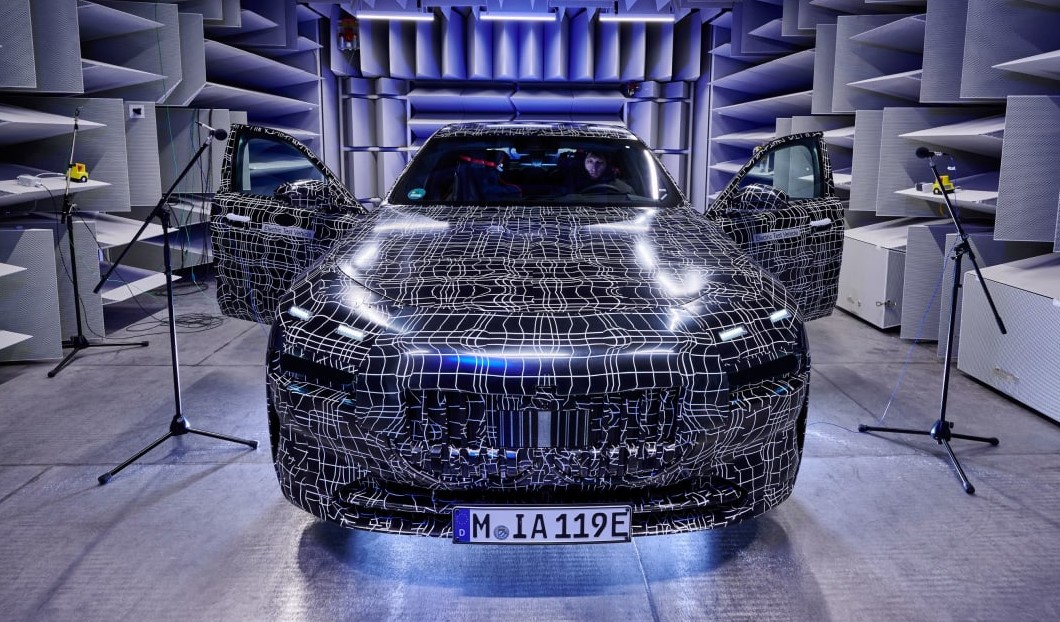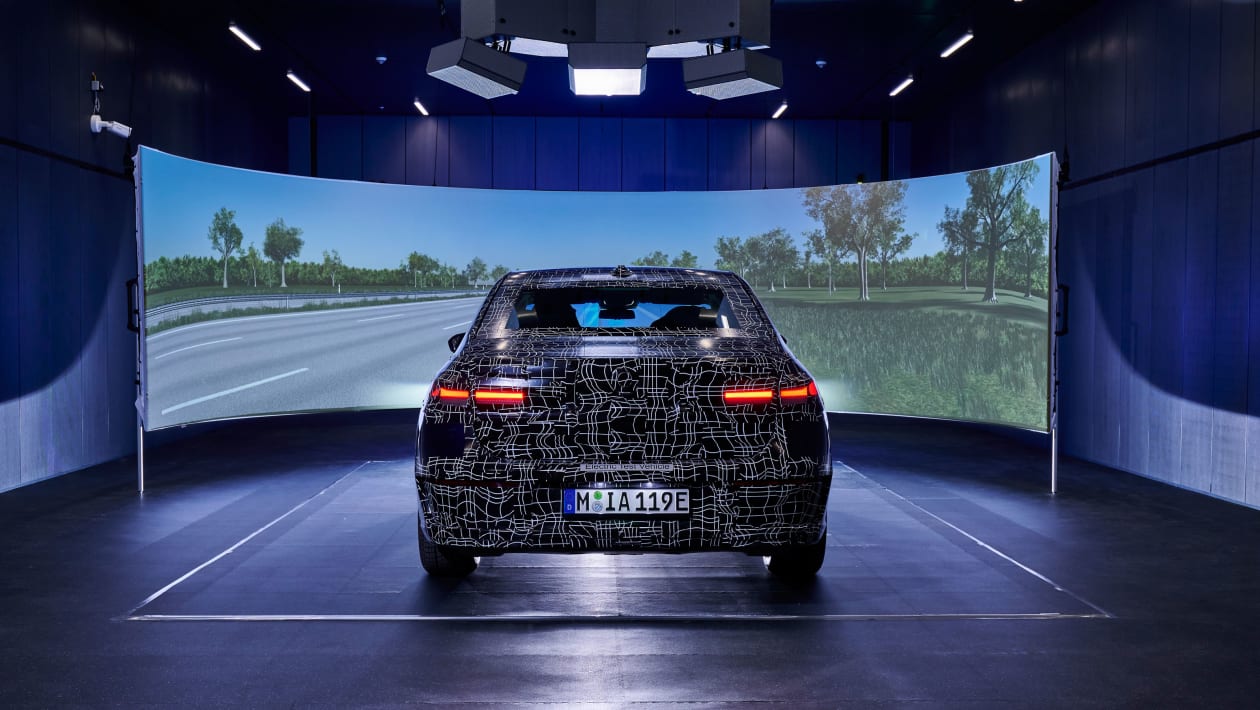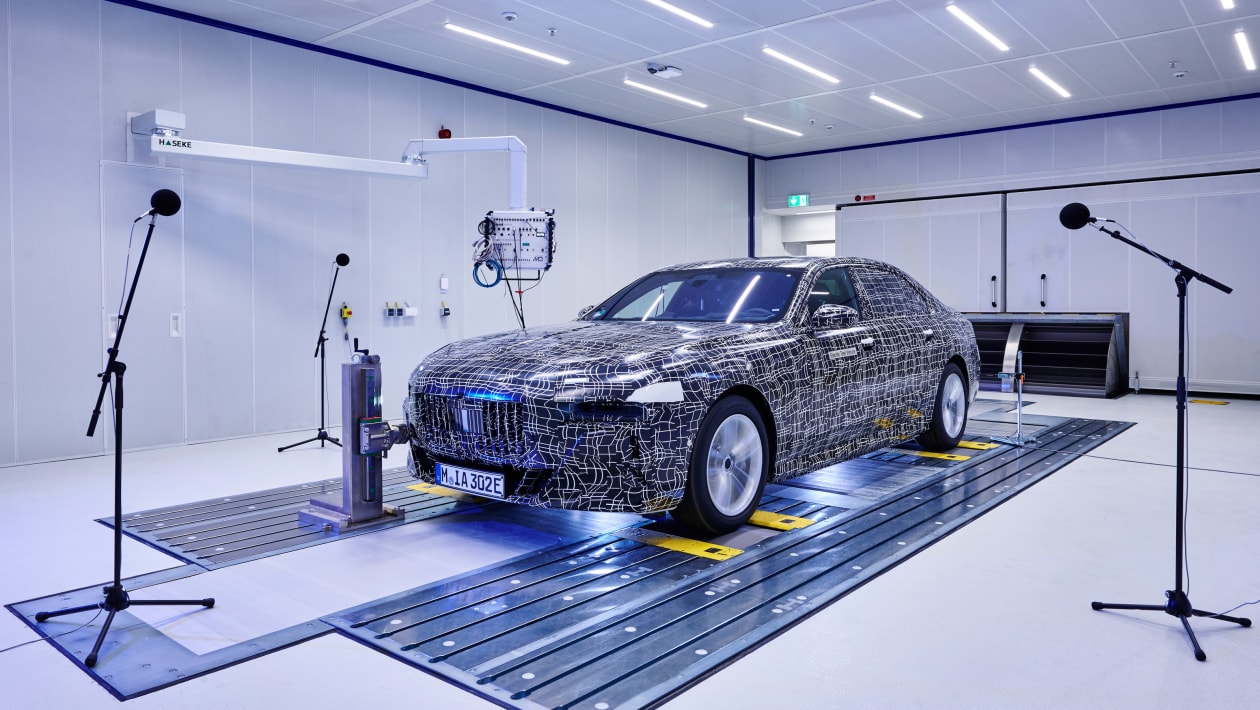The BMW i7 will line up alongside the next-generation 7 Series when it lands this year, and early development suggests almost 650km of range.
BMW is gearing up to launch the BMW i7, which will become a new rival for the likes of the new Mercedes-Benz EQS and the stalwart Tesla Model S when it goes on sale at the end of 2022. It’ll go on sale alongside the seventh-generation combustion-engined 7 Series, and early testing of the luxury EV indicates that it will offer almost 650km of range in top-flight M50 guise.
The i7 is currently undergoing development to hone acoustics and vibrations on the move, and BMW has revealed that at this stage, it projects power consumption of 22.5-19.5 kWh per 100km for the final production version, according to WLTP testing. We expect the i7 to be offered with both the 71kWh and 105.2kWh battery packs from the BMW iX, and these power consumption figures likely apply to the expected i7 M50 flagship equipped with the larger, heavier unit.
Equipped with the 105.2kWh battery, the BMW iX M50 SUV achieves 23.0-19.8 kWh for a range of 610km. Thanks to slipperier aerodynamics, the i7 M50’s lower power consumption should provide a range of nearly 650km, despite using the same 385kW dual motor setup found in the iX M50.
For reference, the Mercedes EQS 450+ can be driven 729km on a single charge, although that car uses a single 245kW electric motor on the rear axle. The 484kW dual-motor Mercedes-AMG EQS 53 outsrips the i7 on power, but offers 571km of range.
These new official images show the EV tackling the later stages of its development programme, with BMW’s engineers optimising the i7’s sound isolation, which includes suppressing motor whine from the drive units and using foam filled tyres to reduce road noise.
The i7 prototype in BMW’s official shots is still heavily camouflaged, so there’s nothing new to glean on the design front. The car’s shape is more that of a traditional three-box saloon than the ultra-curvy, hatchback-style EQS. A long bonnet and high shoulder line combines with a low nose, while the rear follows the classic large saloon format.
BMW also will introduce a new headlight design, first spotted on the facelifted version of the X7 SUV. The current car’s combined daytime running lights and main headlamps will be ditched in favour of split units, with the latter located lower down in the bumper.
As is customary on recent BMWs, the i7 (and its combustion-engine sister car) will feature enormous kidney grilles, while the streamlined nose references that of the iX SUV. Unlike the iX, buyers will also be able to choose between standard and long-wheelbase layouts.
BMW is yet to release technical specifications for the electric i7. However, the company claims that the car’s suspension, steering, braking, driving dynamics and stability systems have been “designed to raise the balance between sportiness and ride comfort that’s typical of the brand’s luxury sedans to the next level.”
The i7 will be based on BMW’s modular CLAR platform and powered by its fifth-generation eDrive technology, which also appears in the new i4 saloon and iX. Using this EV drive system should dramatically reduce production times, because it groups the electric motor, transmission and electronics into a single unit. The layout also cuts the overall mass and size of the system, which translates into a little more range.
The i4 and iX already share the same drive systems – and we expect the i7 will follow suit. We anticipate that the electric limousine will launch in i7 M50 trim with the iX M50’s 385kW dual-motor, four-wheel drive setup.
That system has enough grunt for a 0–100km/h time of 4.6 seconds and a top speed of 200km/h in the iX – figures that the i7 should match or even beat, as it’ll be a bit lighter and more aerodynamic. We expect a lesser 240kW xDrive40-badged variant will also join the range, offering a 0–100km/h time of around six seconds. An M variant hasn’t been confirmed.
Yousuf Ashraf








